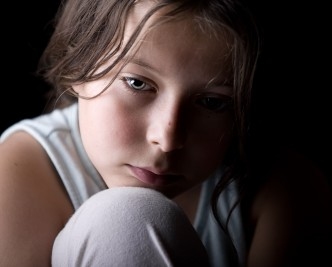How to Talk to Children About Tragedy
by Dr. Howard Paul, PhD, ABPP, FAClinP
 In this day and age, with television, the Internet and smart phones abounding, children are often exposed to information about tragedies at a very young age and with much more detail than we would ever wish.
In this day and age, with television, the Internet and smart phones abounding, children are often exposed to information about tragedies at a very young age and with much more detail than we would ever wish.
Sadly, sometimes our children will even be directly involved in some tragic, scary or potentially traumatic event. It is important for parents to understand that not all tragedies need to resulting psychological trauma and that more than half of all individuals who experience trauma survive without major negative psychological impact.
There has been growing field of study determining the elements that go into what has been called psychological resilience. As parents, we can teach these elements to our children. Helping children deal with trauma best starts before traumas occur by trying to provide kids with a positive attitude, a sense of efficacy and by teaching a “we’ll get through this” attitude.
While sheltering children from trauma, to the extent that it is possible to do so, is a very good idea, after a traumatic event such avoidant actions can create major problems. Traumas often create anxiety and the best treatment for anxiety is exposure. Using this knowledge in our after trauma management can become very important. If children become fearful, and no longer wish to stay in their room or are asking parents to stay with them throughout the night, using exposure tools is often a positive approach to dealing with this anxiety. Provide your child, or even have a togetherness project where you and your child make a “Brave Shield” can be a fun and productive activity. Once or twice a day, and then again before bedtime, have your child get their Brave Shield, arm them with the flashlight and have them search the house for monsters or bad people. After a while, children will begin to argue with you that they know the house is safe and there are no bad people are monsters around in their anxieties will reduce.
One very important factor in speaking to children this to help kids understand that loss and sorrow are normal, natural and need not be feared. Some of the views of our society do not help promote good mental health, in that, people often think that strength exists in anger and weaknesses in sorrow. I think the opposite is true. Being able to openly express grief and sorrow is to simply share human experience. There is a continuum of feelings that starts with joy and ends with sorrow. This continuum represents a natural and healthy range of human feelings. Once we are off that continuum, we are dealing with feelings that contribute to poor mental health. These feelings include anger, guilt, shame and fear (when there is no real object to be feared). Mourning, so critical in the resolution of loss, can never be fully achieved as long as anger is present.
A second important factor is to make sure that we are properly prepared, psychologically, before we speak to our children about any traumatic event. We need to be cautious to not amplify the negative aspects of trauma and to teach children that even apparently horrific events can be dealt with and managed psychologically. We want to teach children that bad things can happen. We want to stress that they do not happen very often.
We often believe that the world must work the way we want it to and, sadly, this is not the case. Just as it is important to teach children that they cannot always win, they cannot always have their way, that people do not always have to treat them the way they wish, it is important to help children understands that unpleasant, even tragic events do occur. On top of this we need to teach them that there is a difference between circumstances that are bad, even really bad and evil, and those that are impossible to cope with. In essence, we need to teach that no event is impossible to deal and, lastly it is most important that, from a psychological standpoint, we teach that we are capable of handling anything that comes our way.
Anyone who was lived for more than a few years will ultimately have to face the death or loss of a loved one or friends. Humans are built to withstand and survive losses. It is our job to teach children that no matter what, nothing is too big and we are not too small to manage. This does not mean that we can do everything. Only Superman can leap tall buildings with a single bound. We are talking here about an attitude of coping, not that we can accomplish every challenge. The most important part of the equation is that even if we cannot leap over the tall building, we still remain adequate and worthy human beings. It’s not too big, I’m not too small, and it isn’t too terrible to survive, coupled with the message that things can happen that we do not like, are the foundational messages of good coping and, in fact, good mental health.
 Howard Paul, PhD, ABPP, FAClinP
Eduardo Chapunoff, MD, FACP, FACC
Howard Paul, PhD, ABPP, FAClinP
Eduardo Chapunoff, MD, FACP, FACC
